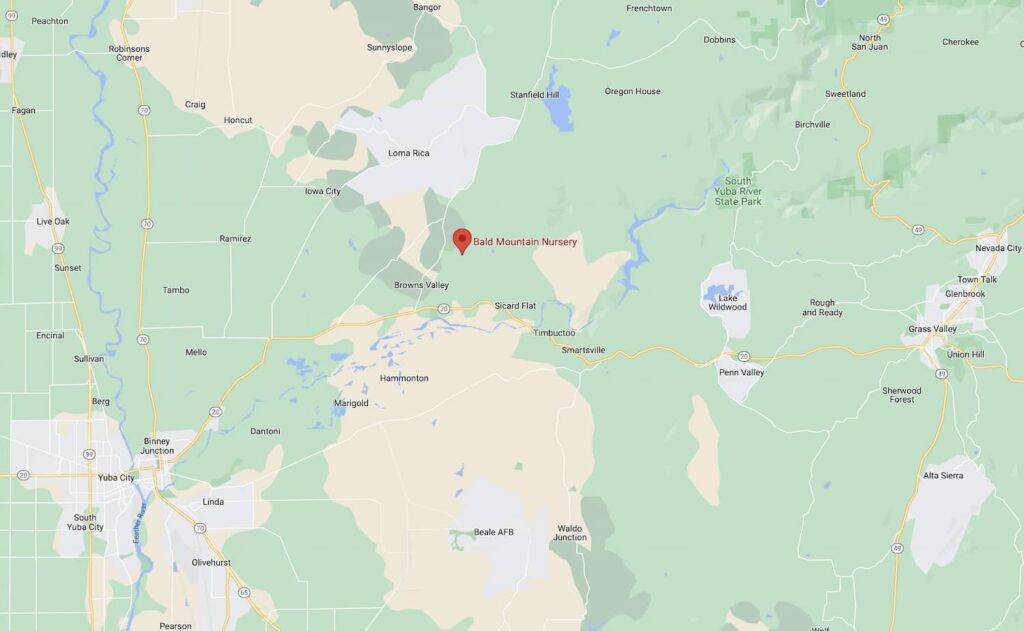October ushers in cooler weather, following the more up and down weather in September. Colder nights help the leaves change to all the anticipated fall colors, and the pumpkins to turn orange in time for Halloween. Days become noticeably shorter- fall is definitely in the air.
October has the vote of people in the gardening business as being the very best time of the year to plant trees and large shrubs, plus other things. There is a very good, common sense reason for this. We have long, hot summers that warm the soil enough for it to stay warm into early winter. The weather is beginning to cool down so you are not planting into more hot weather, making it easier for the newly planted item to adapt. It is going into its dormant season making the demands on the developing root system for survival much fewer. The deciduous plants take even more strain off the root system by dropping all of their leaves. Roots will continue to grow fairly quickly in the warm soil, slowing down only when the soil becomes cold, and even then will expand slowly. Hopefully rain will come to help keep the plant watered, and it can rest all winter and be ready to leaf out (and bloom if it is a flowering tree or plant) in the spring. It will be about a year ahead of any tree or shrub planted in the spring that is trying to establish itself at the same time it is putting on new leaves and possibly flowering plus facing much hotter weather soon. If the summer sun let you know just where a shade (or just decorative ) tree is needed in your yard, this is the time to plant it. It also is a good time to choose trees for fall color. If we do not have a cold fall season the fall colors will be less intense, which can be disappointing, but not a reason for not shopping for the right tree. The next year you’ll have a much bigger tree and maybe, with cooperative weather, a much prettier show.
October is also a good time for planting other things. If you plan to do a winter vegetable garden, but haven’t completed it – do as soon as you can. Winter veggies include cabbage, cauliflower, broccoli, Brussels sprouts, kale, Swiss chard, and spinach. Beets, carrots, radishes and turnips can be grown from seeds, as well. Their stems may be a tad shorter than normal, but they will still be pretty, and next year they will look normal. Winter annuals can still be planted, as well, but again, try to do it soon. They really need some warm soil to become established before cold weather arrives. Otherwise they may sit there doing little all winter, when you are hoping to enjoy their color, and then perk up and look beautiful as the weather warms up with the coming of spring. You may as well enjoy them winter and spring, so try to get them into the ground soon. The winter bedding plants include calendulas, pansies and violas, snapdragons, primrose, etc.
California native plants are best planted at this time of year. Planted now, they will become established in a more normal setting, that is, with nature caring for them. They are much more easily managed when they are going dormant as winter approaches and they can depend on what nature provides. Should we experience another drier winter than usual, they may need occasional watering only. Planting them in the spring and progressing into the hotter summer, there is always the danger of over watering them causing them to succumb to root rot. Speaking of California native plants, California native wildflower seeds are now available – California Poppies, Blue Lupine and Native Wildflower mixes. They have been sown by nature by this time of the year, just waiting for some wet weather to help them sprout. So take a hint from nature and scatter your own wild flowers just where you want them.
Here are some coming attractions to keep in mind:
- The three times for dormant spraying of fruit trees will soon be here – Thanksgiving, Christmas, and Valentine’s Day. It is a busy time, be sure you have your dormant spray is when the time comes.
- Bare root cane berries, asparagus, rhubarb, and artichokes become available in November.
- Another favorite, Blueberries, usually start arriving in November. So, give these things some thought. You might want to do some pre-planning if they are of interest.
- Bare Root fruit trees will be available in January.
Remember, FALL IS THE BEST TIME FOR PLANTING. THE INVENTORY IS FULL AND LOOKS GREAT. THE WEATHER IS COOLING DOWN. Featured in the flyer is just part of all the inventory we have in stock. Come in and browse our entire inventory and PLANT IN THE FALL.
Attached to this email is a list of trees in stock and available for fall planting. If you are looking for something not on the list, let us know. We can probably get it.
Plant in the fall and use 2″ of mulch around your new plantings and you will only have to water a couple of times a week or less to keep them going. They will establish over the winter and then next spring and summer, they will require much less water to keep them growing nice and healthy compared to plants put in during the spring. Use the mulch and deep soak when you do have to water so they can thrive through the summer with much less frequent waterings. FALL IS THE BEST TIME TO PLANT TO ESTABLISH HEALTHY PLANTS FOR NEXT SPRING AND SUMMER.




